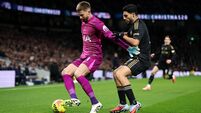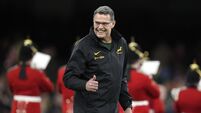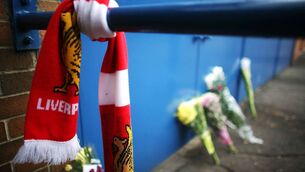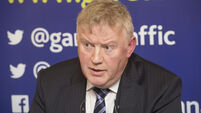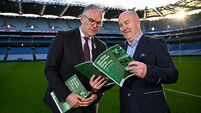Why didn’t someone think of this tactic sooner?
Next year’s gimmick is here. Apologies.
By gimmick we mean the must-have training/game innovation no team can be without for 2011.
Ladies and gentlemen, we give you the University of Oregon football team’s no-huddle offense, courtesy of coach Chip Kelly. Oregon, known as an athletics town – it’s the home of Nike, after all – has scorched its way to a stunning series of victories against highly-rated opponents, and they haven’t exactly been nail-biting victories, either. They beat the University of New Mexico 72-0 and Stanford University 52-31, which was remarkable enough, but hammering perennial football powerhouse UCLA 60-13 made headlines all over America.
Their trick is a simple one – instead of those relatively lengthy breaks between play, when players huddle and settle on the play they want to run, Oregon players simply line up as if there are only seconds left.
They don’t go into conclave to work out their options, because those are worked out already, so it’s speed, speed, speed. Opponents who have traditionally spent 20 seconds or so between plays to catch their breath and set up to defend have been flummoxed by the Oregon team rushing into position, with the result that a) they’re not prepared for the play that’s coming and b) by the end of the game they’re exhausted.
“Some people call it a no-huddle offense” said one of the players recently.
“I call it a no-breathing offense. It’s still football. We hit people. But after a while, the guys on the other side of the line are so gassed that you don’t have to hit them very hard to make them fall over.”
There are fairly obvious applications in all the major field sports played here. Everyone who goes to or watches GAA, rugby or soccer games becomes accustomed to the pause that refreshes.
The few seconds a hurling keeper takes to weigh his options before pucking a ball out. The slight delay as a hooker confers with the line-out captain. The dead time as defenders and attackers arrive into the penalty box for a corner-kick, with the attendant chance for spectators to catch their breath.
It’s inevitable that some enterprising coach, surfing the net on an idle afternoon, will trip across the University of Oregon’s simple ploy of speeding up the play, a tactic which is now so beloved by its supporters that officials who don’t move quickly enough to facilitate it are booed by the supporters.
It’s the oldest maxim in boxing – you never let the other man do what he wants – and if a team on this side of the pond were to apply these rules, speeding up their restarts every time the ball is not in play, even a short-term advantage could be very fruitful.
Aesthetically it’s a problem – you end up like TS Eliot, saying you’ve had the experience but you’ve missed the meaning – but a little preparation on the training field would make a speedier game easy to put into effect.
Before you laugh, consider the precedents. There’s always a new gimmick. This year’s big discovery was stats — the saviours of Liverpool FC are New England Sports Ventures, a group whose name was made when the Boston Red Sox finally won a World Series after almost a century of waiting. NESV rely heavily on sabermetrics, the science of evaluating baseball statistics and assigning value to same. Will they do the same at Anfield? Another high priest of sabermetrics, Billy Beane, manager of the Oakland Athletics – the focus of ‘Moneyball’ by Michael Lewis, and to be played by Brad Pitt in the movie version of same – has also dabbled in soccer, both with his local San Jose Earthquakes and by addressing a ‘Future of Football’ conference about his plans to use stats-based analysis for soccer. Too esoteric for you? Maybe you missed a recent discovery about ice baths, which were de rigeur only a few years ago for sportsmen in all codes, refreshing and revitalising them after hard training sessions. The fashion filtered down through all levels and was followed religiously . . . until that recent discovery, which suggested that while ice might be good for injured tissue, there was no great benefit for healthy players in having a shiver in freezing water after training. There’s always a new gimmick. Until there’s a newer one.
(Note: the above reminds us that if you think it’s cold now, consider the Russian soldiers who watched German opponents march past after the fall of Stalingrad. “They look alert, I’ll give them that,” said the first Russian. “Why wouldn’t they?” said the second. “Their eyelids have frozen off.”)
* Contact: michael.moynihan@examiner.ie; Twitter: MikeMoynihanEx




